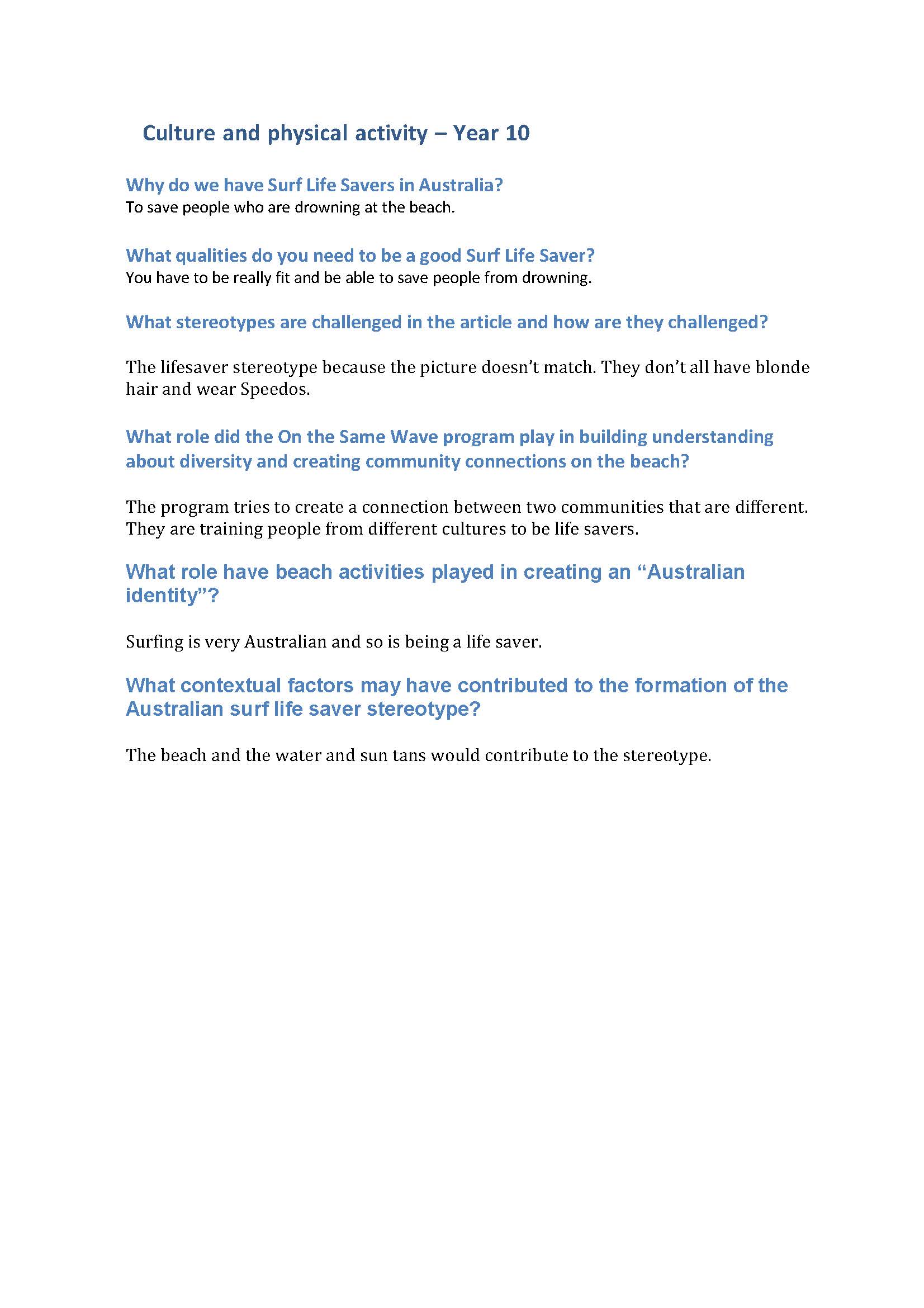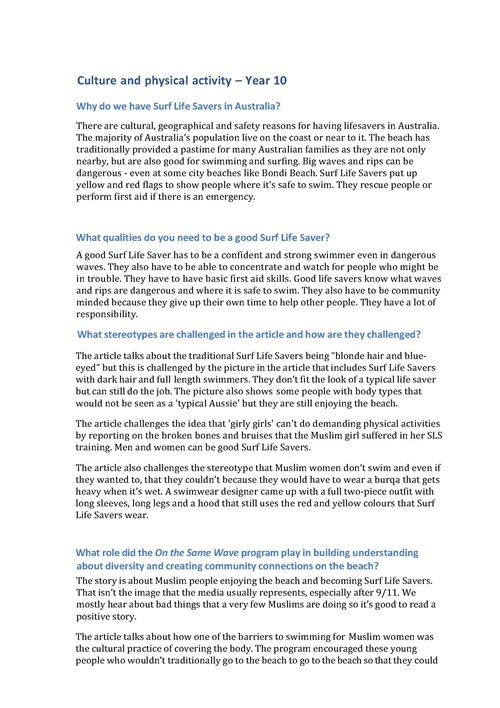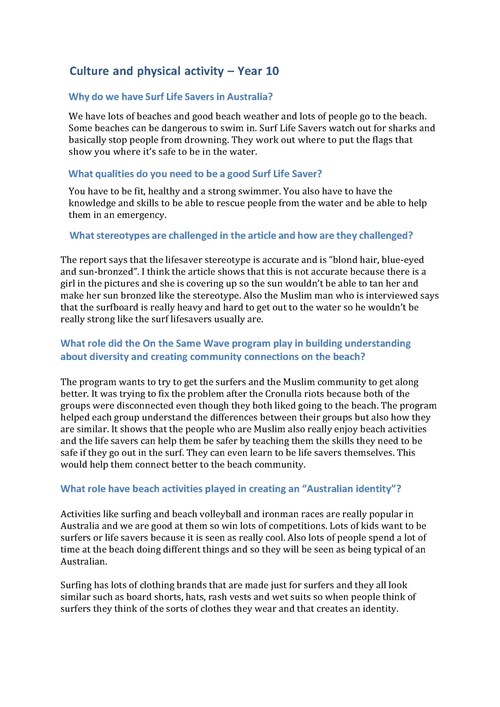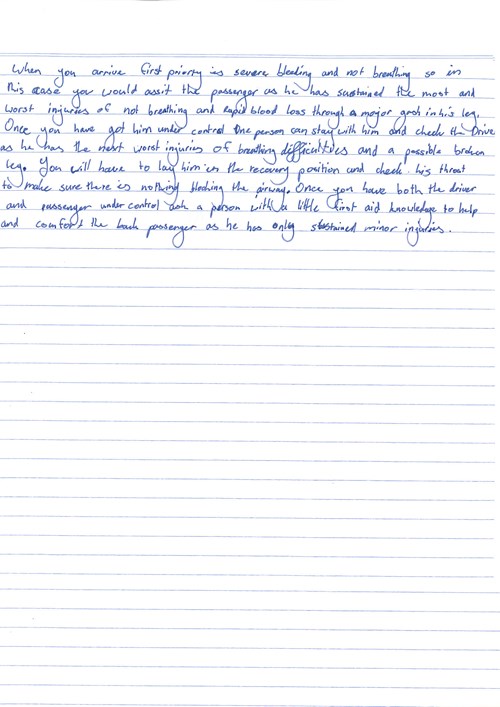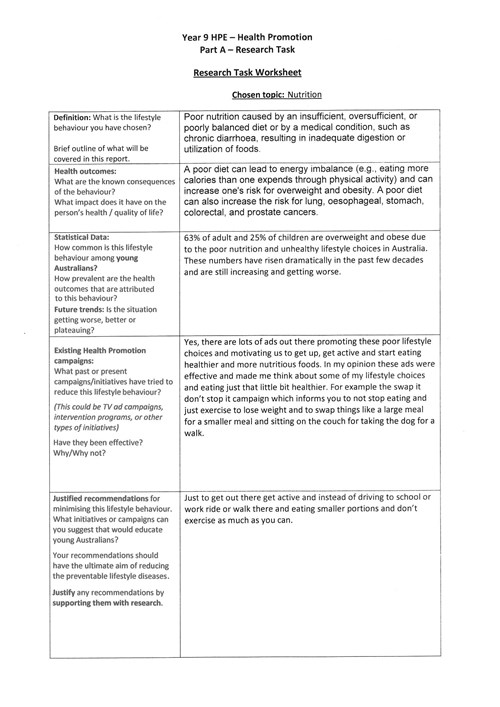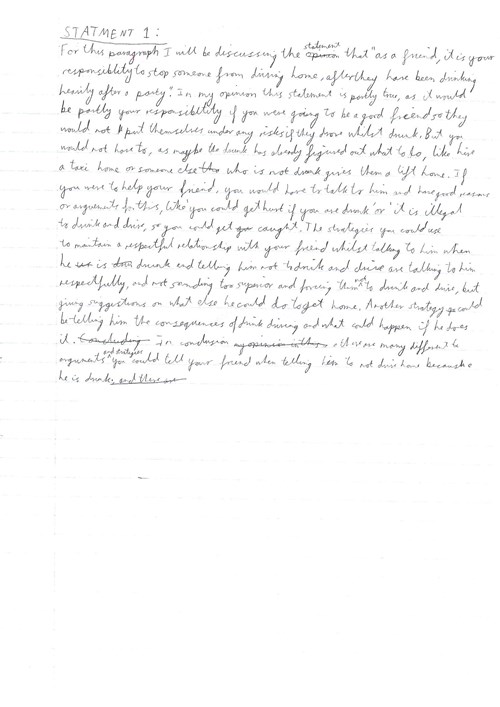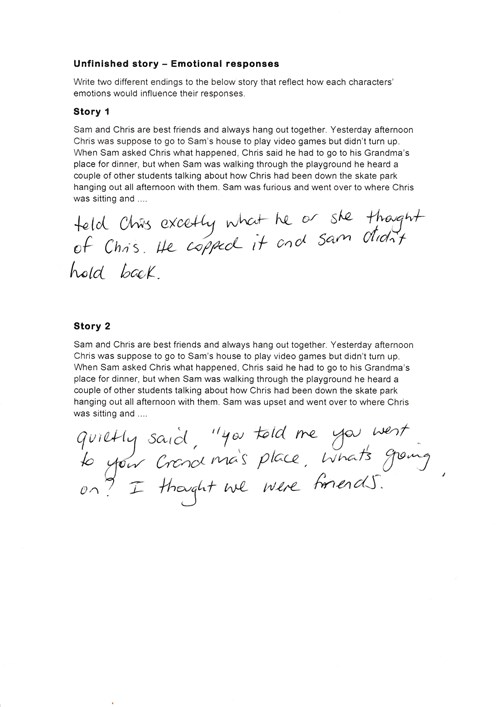Written response: Culture and physical activity
Summary of task
As part of a broader unit about influences on identities, students explored how stereotypes portrayed within the media and broader society influence the way people perceive the activities they can participate in, the roles they can play in the community and the behaviours they are expected to exhibit.
As part of the unit, students discussed stereotypes associated with Australia’s beach culture; for example, the typical surf lifesaver, surfer, male and female beachgoers. Students explored how these stereotypes were formed and the role that beach activities such as lifesaving and surfing have played in defining the identities of youth.
Students were asked to read a newspaper article about men and women from a Muslim background training as volunteer lifeguards, and respond to questions about stereotypes, diversity and identity.
This assessment task relates to the focus area: lifelong physical activity.
